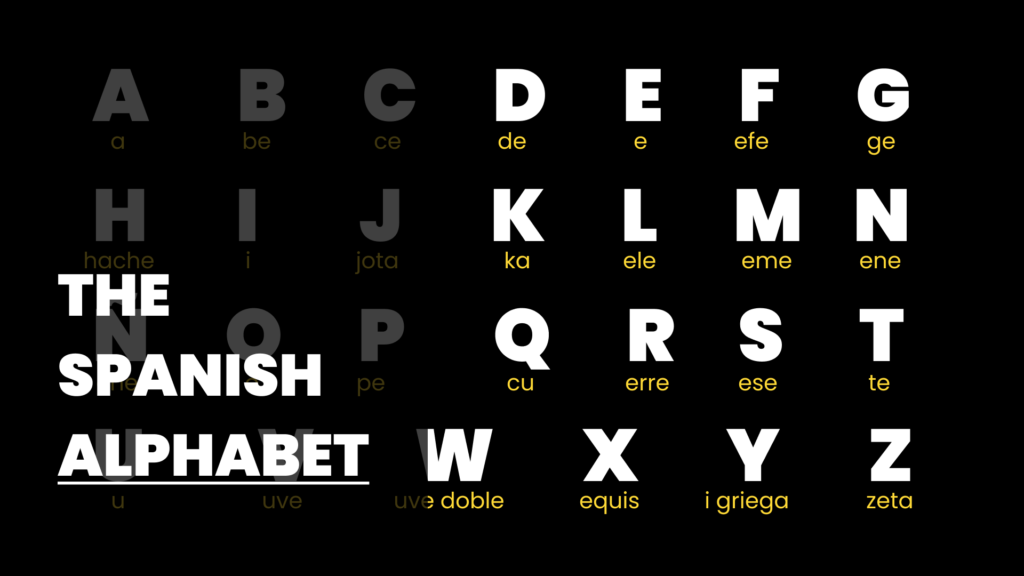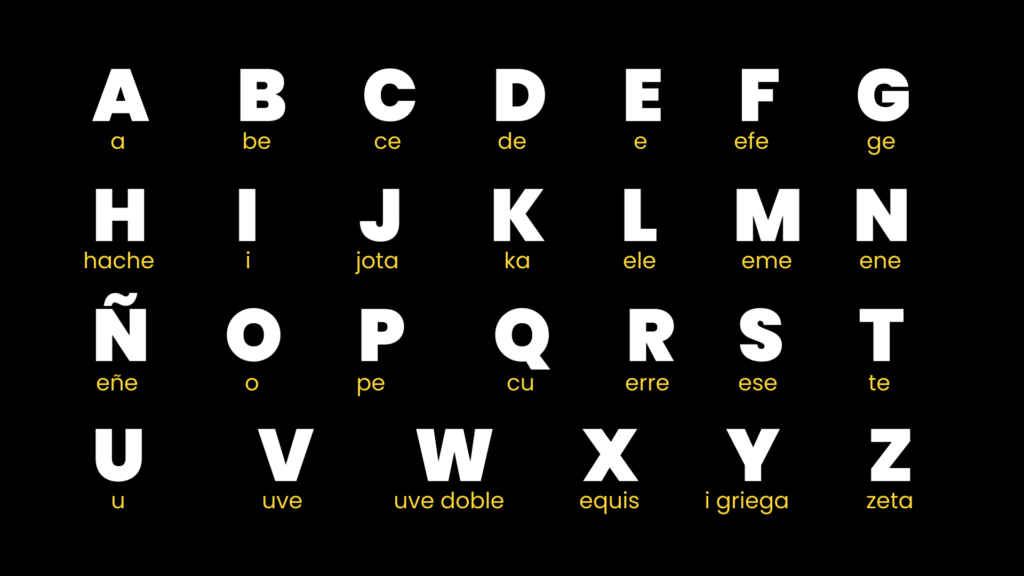
If you’re just starting out with Spanish, one of the first things you’ll need to learn is the Spanish alphabet. Understanding how the letters sound and how they form words will set you up for success as you start building your vocabulary.
In this post, we’ll go through the Spanish alphabet step by step, using basic Spanish words as examples to help you recognize each letter in action. Whether you’re learning Spanish for beginners or just looking to strengthen your foundation, this guide will give you a solid starting point. Let’s get started!
As a Spanish learner myself, I’ve learned the hard way that aiming for fluency right away isn’t the best goal when learning a new language. So, if you’re just starting out with Spanish, I highly recommend familiarizing yourself with the CEFR (Common European Framework of Reference). It will guide you on what to focus on at each stage of your learning journey. Check out this article to get a clearer idea of what you should learn as a beginner and what’s expected of you along the way.
Learning Spanish for Beginners: The Spanish Alphabet
The Spanish alphabet has 27 letters—just like the English alphabet but with one important addition: the letter ñ. While most letters are pronounced similarly to their English counterparts, some have unique sounds that are essential to recognize early on.
The 27 Letters of the Spanish AlphabetA, B, C, D, E, F, G, H, I, J, K, L, M, N, Ñ, O, P, Q, R, S, T, U, V, W, X, Y, Z

Each letter has a consistent pronunciation, which makes learning Spanish for beginners easier once you get the hang of it. Unlike in English, Spanish letters are generally pronounced the way they’re written, so once you learn the sounds, reading Spanish becomes much simpler.
If you want to master Spanish pronunciation, it helps to go through each letter carefully and practice with real examples. In this Spanish pronunciation guide, you’ll find a breakdown of how each letter sounds.
Unique Features of the Spanish Alphabet- Ñ (eñe) – This letter doesn’t exist in English and has a distinct sound, like the “ny” in canyon. For example, mañana (morning/tomorrow).
- H (hache) – Always silent in Spanish. For example, hola (hello) is pronounced “ola”.
- LL (doble ele) – Often pronounced like the English “y” in yes (though it varies by region). For example, lluvia (rain).
- RR (doble erre) – A strong, rolled “r” sound, as in perro (dog).
Tips for Remembering the Spanish Alphabet
Memorizing the Spanish alphabet is easier than it sounds, especially when you use the right techniques. Here are a few simple ways to make the letters and their sounds stick:
- Use mnemonic devices – Associate letters with familiar words or images. For example, think of Ñ as a little wave (~) over the letter N, like a sound wave in España (Spain).
- Practice with flashcards or apps – Spaced repetition tools like Anki or Quizlet can help reinforce the Spanish alphabet by testing you on letter names and their sounds.
- Immerse yourself in Spanish sounds – Listen to the Spanish alphabet in songs, watch kids’ educational videos, or youtube videos just like this one. Hearing the letters repeatedly will help you remember them faster.
The more you expose yourself to the Spanish alphabet, the more naturally it will come to you when reading, writing, and speaking in Spanish.
Conclusion
Mastering the Spanish alphabet is a crucial step for anyone learning Spanish for beginners. Once you get familiar with the letters and their sounds, you’ll find it much easier to tackle basic Spanish words and expand your vocabulary.
As a beginner, the key to success is consistency. Focus on building habits, like reviewing the Spanish alphabet daily or practicing pronunciation. With time, your skills will grow, and you’ll feel more confident reading, writing, and speaking in Spanish.
Keep up the good work, and remember, small steps lead to big progress!


